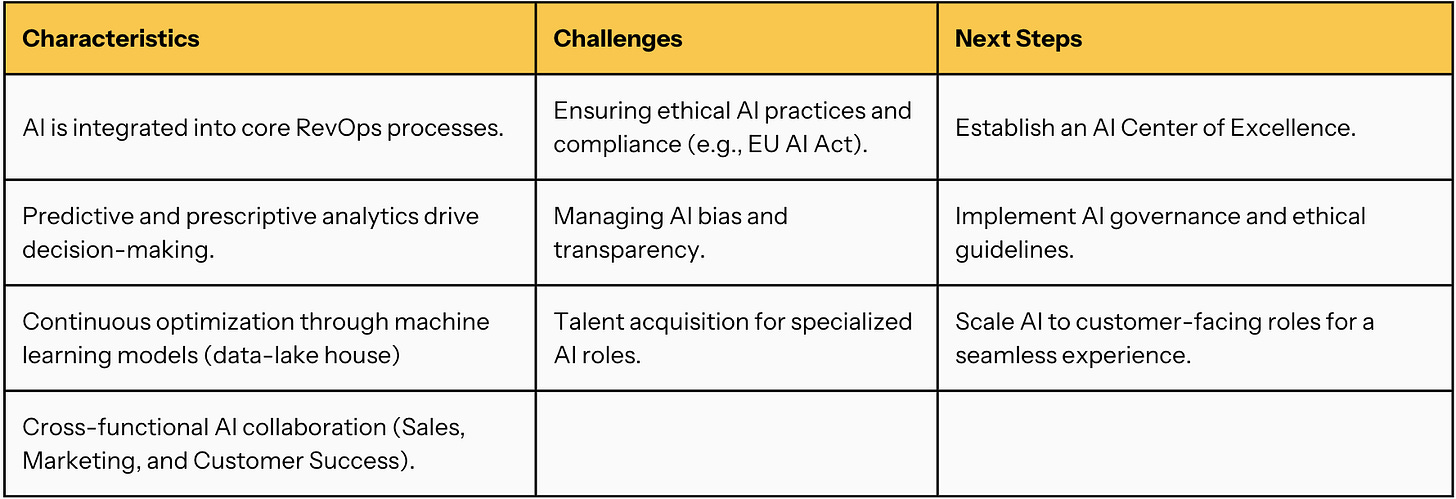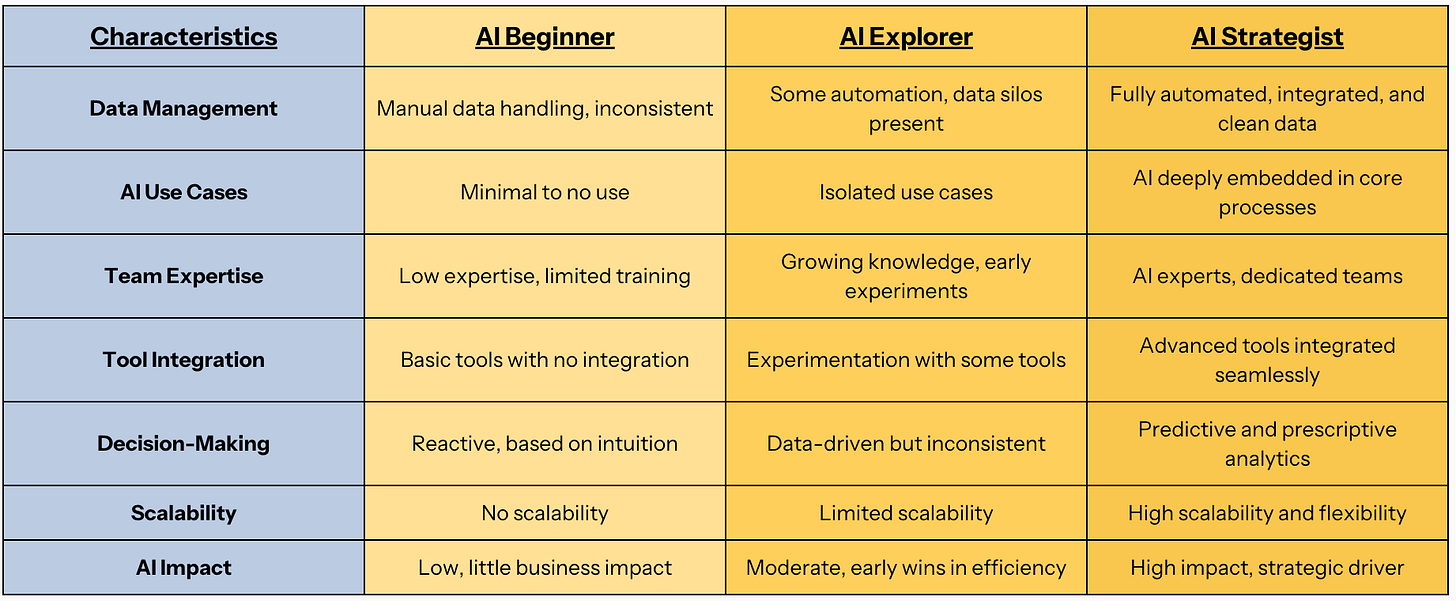The buzz around AI in RevOps is growing, but where do most organizations stand when it comes to actual adoption?
Many RevOps teams dream of becoming AI-driven engines of efficiency and foresight, but the journey is anything but straightforward.
In this article, we'll explore the RevOps AI Maturity Model. A roadmap that can help you understand where your team is today and what it takes to reach the next level of AI adoption.
Stage 1: AI Beginner
Most companies are still in this foundational stage. At this level, the emphasis is on experimentation, setting up clean data foundations, and trying to understand where AI could make an impact.
Characteristics include manual data handling, data silos, and an overall lack of AI-specific resources or expertise. The challenges are often related to inconsistent data, lack of technical skills, and internal resistance to adopting new tools.
The next steps for AI Beginners? Establish a clear and structured data foundation, start training your team on the basics of AI, and focus on identifying simple, high-impact use use case.
Curated GTM & RevOps AI Tools
We looked at over 320 AI tools that have relevance for GTM or RevOps. We worked with some of the tools, tested some, or had demos of the tool. In a few cases the review is just based on external research.
The result is a list of 29 recommendations. You can find the list here.
One observation was that so many companies claim that have an AI. But in so many cases this AI was just a simple API call to OpenAI. Very often less than 5% of a the softwares features had something to do with AI and the rest nothing. More than 200 of SaaS tools we looked at fall in that category. We excluded all from the our list.
Lessons: Do some deep research as many company use “AI” just as a marketing term.
Stage 2: AI Explorer
The AI Explorer stage is where AI begins to make a noticeable impact. At this level, organizations have implemented AI tools for specific tasks and are actively experimenting across different RevOps functions.
The challenges? Scaling these solutions beyond isolated use cases and integrating data from different sources to ensure a consistent flow.
The next steps involve creating an AI roadmap to scale, investing in data quality, and building feedback loops to refine AI models.
Stage 3: AI Strategist
Companies that reach the AI Strategist level are truly AI-first. They use predictive and prescriptive analytics to drive decision. Making use across all GTM & RevOps processes, ensuring that AI is seamlessly integrated into core functions.
The challenges at this stage include managing AI bias, ensuring ethical practices (like compliance with the EU AI Act), and acquiring the right talent for specialized AI roles.
Next steps? Establishing an AI Center of Excellence, scaling AI to customer facing roles for a more personalized experience, and continuing to optimize AI models for ongoing improvement.
Moving Through the Maturity Model
Where does your Company stand? My guess is the following distribution for companies:
AI Beginner = 99,9%
AI Explorer 0,089%
AI Strategiest = 0,001%
I assume here all companies globally. If we consider the subset of SaaS that have RevOps. Then maybe the numbers look like this:
AI Beginner = 98%
AI Explorer 1,9%
AI Strategiest = 0,1%
Sounds low? Not in my experiences. Having an effective RevOps framework running in a company requires a lot of work and effort. Excellent Change Management is essential.
With AI we are adding a new technology that is changing how businesses work. This will require even more change. The thing is business need to change to stay competitive.
New lean tech companies will have it easier. To move quickly along the maturity model. Existing players will have a harder time as the required change in their business will require tough decisions—aligning teams but also reducing teams.
But moving from Stage 1 to 2 to 3 is necessity, not a luxury.
The leaders of the future will all be AI Strategists. Where does your team stand today, and how can you take the next step on your AI journey?








